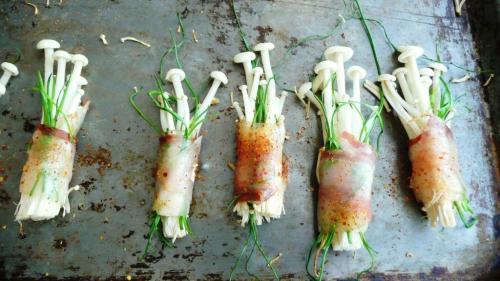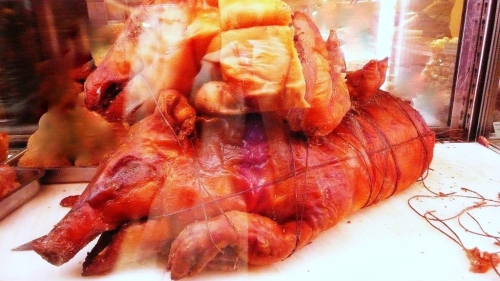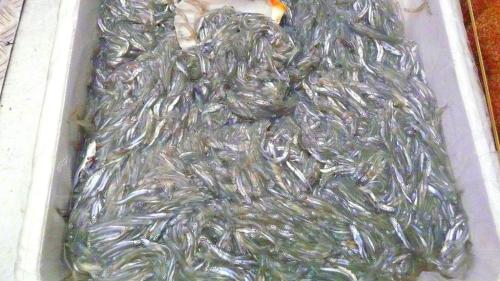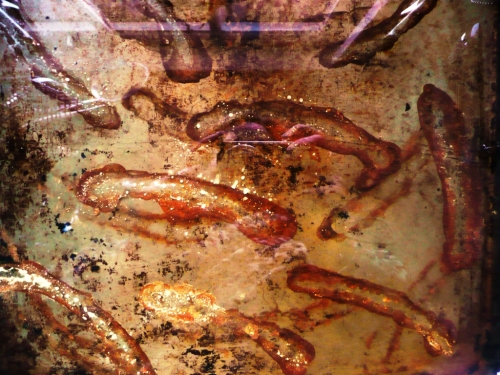Posted in terrific tools | Leave a Comment »
Some dregs of Christmas last a long, long time, but who wants a taste of the festive season while Spring’s in full swing? With all the sunshine bouncing about, it’s time for a tart. Stilton: sufficiently patriotic for a royal wedding; walnuts: perfect nibbling for a long, long weekend. So here’s my Stilton and celery tart in walnut pastry, made of yuletide leftovers dredged from the depths of the freezer, with a savoury spring in its step. Talk about resurrection….
100 g walnuts
200 g plain flour
100 g cold unsalted butter, diced
1 medium egg, lightly beaten
1-2 tbsp cold water if needed to bind
Grind the walnuts finely on the pulse setting of your food processor; add the flour with a pinch of salt and pulse to combine. Add the butter, pulse again until the mixture looks like fine breadcrumbs, then add the egg incrementally through the funnel, pulsing gently all the while. As soon as the mixture looks like it’s starting to come together, stop! If it doesn’t, add a tablespoon of cold water, then check again: it will.
Turn out the mix onto a floured surface and roll out gently or press it together with your fingers, then use it to line a 23cm loose-bottomed tart tin to about the thickness of a pound coin. Cut away the excess but don’t trim the edges yet, place it on an oven tray (you don’t want the bottom falling out) then cover with a plastic bag (or cling film if you must) and refrigerate 30 minutes or so. This will let the pastry “rest” as the flour absorbs the fat and moisture. I think we all know by now that it will shrink dismally in the oven if you omit this step.
Bake blind at 190C/Gas 5 for 15-20 minutes until the edges are starting to colour, remove baking beans* and prick bottom all over with a fork then return to the oven for a further 5 – 10 minutes until that looks nicely cooked through. Remove from the oven and, once it has cooled enough just enough to handle, trim the pastry edge level with the top of the tin. Reduce oven temperature to 180C /Gas 4.
Stilton & celery filling
25 g butter, unsalted as ever
1 leek, shredded
3-4 sticks celery with leaves, finely chopped
250 ml double cream or as I did, a mixture of DC and fromage frais
4 eggs, beaten
200 g-odd Stilton (frozen leftover Texford & Tebbutt is terrific – thaw before using!)
Melt the butter in a sauté pan and fry the leeks and celery with a good grinding of black pepper – and a whisper of freshly grated nutmeg if you like such things – gently until softened, but still with a bit of texture. Cool slightly then sprinkle across the base of the tart case. Crumble the Stilton evenly over the vegetables. Stir the dairy liquid into the egg yolks to amalgamate, then pour over the Stilton and vegetables.
Gently transfer the tart into the oven – middle shelf – to bake 30 minutes approximately; the second the centre stops wobbling take it out to cool. Serve a green salad with a sharp dressing on the side.
Incidentally, liquid legacies from last December, Sainsbury’s TTD Dry Amontillado and Oloroso sherries, made an auspiciously deliciously happy marriage with these punchy flavours.
*my baking beans have gone awol so I substituted with glass nuggets (the kind used in floristry), which seemed to work just as well.
Posted in recipes, spring, vegetarian, Yule | Tagged Pastry, Tart, walnut | 2 Comments »
Well, fo-di-oh-dee; what a wonderful weekend! Kicked it off on Maundy Thursday with a visit to the remarkably beautiful Le Café Anglais, courtesy of their magnanimous Friend for a Fiver offer: this consisted of halving the total food bill for the two of us and adding just five pounds to the remainder. For the mathematically minded, our alimental equation was thus:
£ (12+9.5+24.5+29.5+3)/2 +5 = £44.25
And what a terrific deal: we descended as a pair of locusts intent of bankrupting Rowley Leigh by our greed but, on finding ourselves defeated by the gentlemanly generosity of his portioning, declined dessert. A cover charge, wine, coffee and service boosted the bill considerably, but every penny was worth the spend. What a thrill to sip chilled Saumur (blanc et rouge), over a sunny spring luncheon in such stunning surroundings: a total treat.
No pix though; I’ve become a bit squeamish about photo-ing food in public and there are plenty already online… suffice to say the icy oysters could not have been fresher, a holy trio of hors d’oeuvres lived up to their legendary status, the St. George’s mushrooms were an earthly delight, the salsify cooked to perfection – yes, every complimentary cliché about this place is true. And as far as I’m concerned, no photo could do justice to the majesty of the art deco architectonics either. I recommend you go and enjoy.
Talk about putting a spring in our step; we spent the rest of the afternoon strolling across the western edge of Hyde Park, admiring the view from the upper deck of a Number 9 bus before winding our way across Soho and Covent Garden to Charing Cross and then home.
Well, with the stunning weekend weather I think we all felt a bit resurrected by Easter Monday; fit and ready for fresh somethings – anythings after the long winter hibernation. But, having forgotten to go to the farmers’ market on Saturday our only “fresh” fixings were frozen peas. What? Ok, frozen peas: they’re “fresher” than fresh peas, so there. What was at first a disappointment and a waste of ingredients I transformed into something that blew us all away, hooray: fresh herbs and fresh ricotta can take you a long, long way.
pea, lettuce & lovage soup with pea & ricotta bruschetta
The soup took inspiration from Mark Hix’s multiple versions on The Independent’s website, or those given by Hugh Fearnley-Wittingshall at various locations. I did it this way:
Soup
a goodly knob of butter – about 15g or 1/2 oz
1 or 2 leeks, washed and shredded
1 little gem lettuce, shredded
200g frozen peas
500 ml vegetable stock (I haul out the Swiss Marigold)
6 lovage leaves (strong flavour, taste as you go)
salt, pepper
Sweat the leeks in the butter until soft, about 10 minutes. Add lettuce and peas, turn to coat in butter and soften gently under a lid for 5 minutes-odd. Add the vegetable stock, bring to a boil then cover and simmer until the peas are tender – about 10 minutes. Blend, adding lovage leaves gingerly, tasting all the while. If, like me, you have a not-very-good hand blender it won’t do a great job and your soup will never attain the desired smoothness. I kept going to no avail, so eventually decided to sieve it. This produced a fine-flavoured thin soup and a mountain of debris – far too much to waste indeed, hence the bruschetta.
Bruschetta with pea and ricotta
leftovers from sieving pea soup
sufficient ricotta to lighten the leftovers to a spreadable consistency (2 tablespoons perhaps)
a grating of fresh lemon zest
several drops fresh lemon juice
small sprig fresh mint, chopped fine
a scattering of fresh chives, chopped fine
one small clove fresh garlic, any central green shoot removed
a couple of slices pain de campagne
a drizzle (YES – a drizzle) extra virgin olive oil, or, even better, lemon oil
Stir together the pea solids and ricotta, add the herbs to taste and season. Grill the bread on both sides, and once lightly toasted, rub the garlic clove over the surface, as when making Pa Amb Oli (minus the tomato, natch). Top with the pea and ricotta mixture, apply the drizzle of oil and sprinkle with the scatter of herbs. Serve the soup in small cups alongside the bruschetta.
ps – I can report that the soup tastes just as good, if not better, chilled the next day – perfect for the hot weather of late.
Posted in recipes, restaurants, spring, vegetable | Tagged bruschetta, Cook, Le Cafe Anglais, pea and lovage soup, ricotta | 1 Comment »

Somewhere between ratatouille and caponata lies the Spanish Pisto Manchego, (pedestrian translation: slow cooked summer vegetables) cooked without hurrying to a lambent jamminess, in contrast to the toothsome integrity of each separately sauteed vegetable in a Provençal ratatoille nicoise or the pickle-icious unctuousness of the small dice caponata.
 I use Elizabeth Luard’s recipe from The Food of Spain and Portugal: a regional celebration. She notes:
I use Elizabeth Luard’s recipe from The Food of Spain and Portugal: a regional celebration. She notes:
The essential ingredients are the aubergine, the garlic and the olive oil – everything else is negotiable.
Continue Reading »
Posted in ingredients, recipes, Summer, vegetarian | Leave a Comment »
Who could resist a heavily discounted package of enoki mushrooms? And yet it comes with a dilemma: what to do with the contents…
I don’t do stir-fry, which puts 90% of recipe suggestions out of the question, I don’t subscribe to that (largely north american) practice of throwing a number of costly ingredients together in a bowl and calling it a salad, and neither am I keen on mushrooms in their raw state; options diminishing by the nano-second. But I dislike wasting food more than anything: time to get my imagination into gear.
Inspiration wafted up from the pages of Lorenza’s Antipasti. This fab charity shop find delivers masses of recipes but also, and what I love most of all in any decent cookbook, interesting and informative introductions to its several sections: lots of text! It’s beautifully organised: Part I is a pair of essays, Types of Antipasti and The Antipasto Pantry, while Parts II and III are Finger Food and Fork Food respectively, both sub-divided, and Part IV is Preserves and Basics.
I used the method for rotolini – or involtini – and wrapped a few enoki with chives in half-slices of pancetta and baked them for about 15 minutes at Gas 4-ish (375F, 190C, moderate-to-hot) to crisp: simple, genius!
 A delightful nibble, with the appearance – and texture even – of some strange sea-creature; a hitherto unknown species of squid, perhaps? Definitely to be repeated; this time I seasoned with nutmeg and ground Espelette pepper but next time, furthering the seafood idea, a sprinkle of dashi-no-moto and some shredded nori could be killer-delish: watch this space…
A delightful nibble, with the appearance – and texture even – of some strange sea-creature; a hitherto unknown species of squid, perhaps? Definitely to be repeated; this time I seasoned with nutmeg and ground Espelette pepper but next time, furthering the seafood idea, a sprinkle of dashi-no-moto and some shredded nori could be killer-delish: watch this space…
Posted in books, vegetable | Tagged antipasti, enoki, recipe | 1 Comment »
I’ll try anything twice but this time just the once will do fine. Porchetta is one of those authentic specialities of la cuisine niçoise I would have loved to love but it just aint gonna happen. We’d been gazing in awed fear and longing for far too long at the petrifying porcine carcasses in their glass coffins outside the charcuterie shops along rue Pairolière in Vieux Nice; now was the time to bite the bullet and actually buy a slice. Thank heavens Madame at Charcuterie Ghibaudo was kind enough to offer a demi-tranche as this stuff is not cheap at near-enough €20 a kilo. As it was, our package weighed a good 400g.

So we trotted off home, buying a baguette en route, to unwrap the porchetta and unravel its mystery:

Not a lot of mystery there, as it turns out: it’s everything that was originally in the piglet, chopped up and mixed together with a few herbs, garlic, a little seasoning, then stuffed right back in. And when I say everything I mean everything, that brilliant white circle at bottom centre of the slice is a piece of bone, the pale wiggly bits are intestine and the pinky-white chunks are hunks of fat. The T-zer and I felt like Jack Sprat and spouse trying to enjoy this curate’s egg: he quavers at the taste of offal, which I rather enjoy, while I tremble at the texture of anything too chewy. Not a hit chez nous, but you may find the idea delightful and, failing a trip to Nice to taste the real thing, here is a recipe (in French) for making your very own Porchetta Niçoise.
Posted in spring | Tagged food shopping, Vieux Nice | Leave a Comment »

Not much going on here, just the fixings for a lazy afternoon at our home from home in Vieux Nice: what more could you need than a chilled bottle of Côtes de Provence rosé, a package of freshly sliced finocchiona (fennel salami), crunchy taralli with chili, baguette still-warm from its wood oven, a block of freshly churned butter and a wee pot of taramasalata, all picked up during the course of a leisurely shopping stroll around the old town streets? Well, I can tell you, a copy of Nice Matin to read on the balcony, that’s what.
Too bad we flew home before the volcano exploded…
Posted in shopping, spring | Leave a Comment »
My first husband’s idea of wit was to exclaim, whenever the opportunity presented itself (surprisingly, gratingly, often); “Anchovies? Smelly little fish!” The marriage didn’t last long, but if by some warped circumstance we had found ourselves strolling the markets of Vieux Nice last week, I should have been delighted to waterboard him with a vat of poutine in response.
Now, fresh poutine is not smelly but it is most certainly a preponderance of tiny little baby fish: the fry of sardines and, yes-you-guessed-it, anchovies; rather rare, rather restricted and rather delicious, netted strictly by licence, only along the Côte d’Azur between Antibes and Menton, and only for a month at the end of winter (February/March): very local, very special and altogether too good for no-good husbands. Happily for the peace of the Vieille Ville, I was accompanied by the darling Mr T, whose adult approach to things piscine is a joy, an ichthyic ideal.
Jacques Médecin, controversial erstwhile mayor of Nice, was a passionate advocate of Niçoise cuisine and I quote here from his well-regarded cookbook, La bonne cuisine du Comté de Nice:
A la saison de février, lorsque brille, sur les étals, la nacre de poutine, les rues des villes – vieilles ou nouvelles – retentissent de l’appel des marchandes: “A la bella poutina! A la bella poutina!” qui inspira mon vieux camarade de classe Gilbert Becaud dans sa chanson sur les marchés de Provence.
Around February, as the pearly sheen of poutine gleams on the market stalls, town streets – old and new – ring with the call of the vendors: “A la bella poutina! A la bella poutina!”, the inspiration for my former classmate Gilbert Becaud’s song, The Markets of Provence [Gastroplod’s rough & ready translation]
and for your extreme pleasure, here’s Gilbert Becaud himself – listen out for him calling “A la bella poutina” at the very end and you will have a charming early-spring echo of Place St-François in Vieux Nice.
click here for the lyrics (in French)
I took my first and as-yet-only taste of poutine at the Café des Fleurs on the Cours Saleya, in one of its traditional preparations in the form of an omelette. No surprises here, it tasted just like an omelette with all the briny flavour and savour of very fresh anchovies and sardines, and I did enjoy the sparkle of their teeny-weeny little eyes glinting in the sunlight.
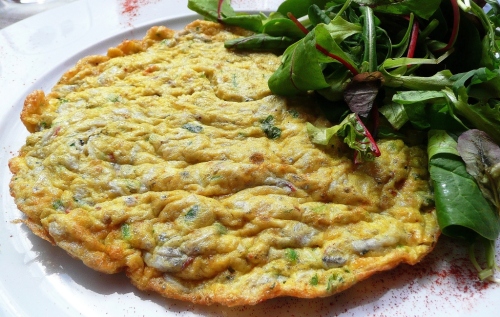
French Wiki reference: http://fr.wikipedia.org/wiki/Poutine_(Nice)
* this poutine has nothing to do with that somewhat-stodgier Québecois fries-gravy-curds speciality also called poutine: although I used to enjoy that version now & then in Vancouver, I know which I’d prefer now…
Posted in ingredients, overseas, restaurants, shopping, spring | Tagged anchovies, poutina, poutine, sardines, Vieux Nice | Leave a Comment »
Some folk see the Virgin Mary in a slice of toast and some folk see just a piece of toast

whereas I see a Keith Haring in my sink: put some sausages on a tray, bake them in the oven, eat the sausages and make some art while it soaks. Amazing what you can do with a pound of chipolatas, eh? But seriously, those earth colours and Rothko edges just blow me away, so I give you a strangely fitting quote from Madonna in Vogue:
“Beauty’s where you find it (not just where you bump and grind it)
or eat it…
and I can’t risk !! resist including a weirdly Chris Ofili-like version of the same phenomenon taken the following morning, complete with stunning glinty bits:
Very little image manipulation went into the making of this post, btw, I just selected for different light settings.
Posted in pork | 2 Comments »
Hugh Fearnley-Wittingshall’s article in the Observer had me all steamed up the other week. An ice age having passed since I last made a savoury steamed pudding and the extended winter chill providing exactly the right context, it was a touch frustrating to not fancy Hugh’s suggestions. But with an imminent delivery from the Blackface Meat Co. forcing a bit of a clear-out, a little frozen package of mixed feathered game sprang before my gunsight.
During the long google-trawl for appealing alternatives I came across Claire MacDonald’s recipe in the Scotsman, which featured an irresistibly fragrant-sounding lemon and thyme suet crust:
 which more than lived up to its promise after a 3-hour steaming
which more than lived up to its promise after a 3-hour steaming
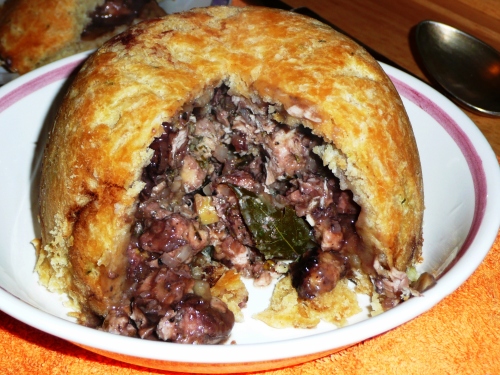
Delectable, golden suet pastry encased an aromatic cascade of tender morsels:
a great result partnered perfectly by this Pinot Noir from the Pfalz.
Steamed Game Pudding
lemon & thyme suet pastry
300g plain flour
1 TBS baking powder
150g shredded suet
1 tsp salt, 1/2 tsp black pepper
finely grated rind of 1 lemon
about 1 TBS fresh thyme leaves
a little cold water – approx 50ml
Butter a 1.5 litre pudding basin. Put the suet in a mixing bowl and sieve over the flour, baking powder, salt and pepper. Add the lemon rind and thyme leaves then, initially stirring with a fork, add only just enough cold water to make the pastry come together in your hands.
Cut off about a quarter of the pastry and roll it to a circle of the same diameter as the top of your pudding basin. Roll out the rest of the pastry nice and thinly and use it to line the pudding basin.
game filling
500ml bold red wine – I used corked Chilean Cabernet Sauvignon
5 or so juniper berries, crushed, and a sprig of thyme
375g pack mixed feathered game pack from Waitrose
50g button mushrooms
1 TBS flour, seasoned with salt & pepper
2 shallots diced fine
a bayleaf
1 can game consommé
Boil the wine with the juniper berries and thyme to reduce by half, then leave to cool: strain. Check over the game pieces, removing any obvious sinews, and toss them with the shallots and mushrooms in the seasoned flour, making sure everything is lightly coated. Pack the lot loosely into the pastry-lined pudding bowl and carefully pour over the reduced wine. Inveigle the bayleaf into the centre. Help the wine soak down by easing a knife or spoon handle between the chunks of filling, then top up with game consommé to almost cover; if there’s any left over heat it and serve as extra gravy. Lightly dampen the edge of the pastry disc then place it on top of the pud and seal together the edges all around. Put a disc of baking parchment over the pastry then double wrap the whole in tin foil, leaving plenty of room for expansion by making a pleat over the top. Put this package on a trivet in a large saucepan and pour in boiling water to come halfway up the sides of the pudding basin. Cover and steam gently for 3 hours.
Remove from pan, unwrap gingerly, then invert onto a deep-rimmed dish and serve with buttered kale, steamed carrots and a large serving of pride.
Disclaimer
Thrilled to bits with this magical dome I made it again last weekend with the Blackface equivalent: not such a good result by any stretch. Whereas Waitrose game packs consist solely of our feathered friends, Blackface’s Game Mix seemed much more of a four-footed mixture – frustratingly not identified on the pack. Cut larger, some bits were frankly gnarly and the whole better suited to quick searing followed by a long, slow braise than relatively rapid steaming-from-raw. Mr. T. liked it fine but he’s a carnivore’s carnivore and enjoys a good chew. This showed up the one big disadvantage of a steamed pudding: it requires a leap of faith as there’s no way of checking how it’s coming along and you simply have to live with the consequences once it’s cut open; quite the Pandora’s box. So, no more game pudding until next autumn but hey, we’ve got a mighty game stew to look forward to before this winter’s out…
Update:
I emailed Blackface to ask what was in their game mix and their very prompt reply stated:
You received your order on the 18th February therefore the seasonal game pie mix would have contained approx 70% venison and the remaining amount made up with woodpigeon, rabbit and hare.
so there you go!
Posted in game, recipes, slow food, Winter | Tagged Blackface Meat Co., game cookery, game pudding, savoury pudding, steamed game pudding recipe, suet | 3 Comments »



